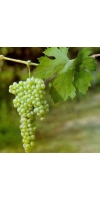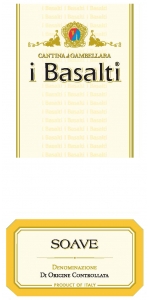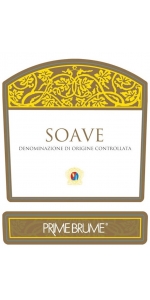Garganega

Garganega is one of the most underrated white grapes on the planet although it is also one of the most widely planted white grapes in Italy. Garganega grapes in the Veneto region are blended with Soave and Gambellara. Garganega is also blended with Trebbiano di Soave. Garganega, pronounced gahr-gah-HEH-gah, grape is not as popular as the Sangionvese grape and is often blended with Chardonnay. The late-ripening Garganega is well suited for sweet and luscious appassimento wines. Like Chardonnay, Garganega reflects the environment. When it is grown in a cooler climate, Garganega exhibits apple like characteristics that are reminiscent of Chablis, also exhibiting good structure that is derived from its well-defined acidity. Warmer regions produce Garganega with stone fruit, citrus flavors, and delicate expression. These characteristics can be softened if the vines are allowed to follow their natural inclination. This also allows the grapes to yield heavily. When produced in the appassimento style, Garganega grapes are richly textured with tropical fruits, exotic spices and honey that is combined with a backbone of citrus flavors and aromas. Garganega wines pair well with seafood, white meat, and risotto. The sometimes almond flavors and vibrant fruit quality also make it a delicious wine to enjoy before a meal.
Gambellara Soave I Basalti is made from 100 percent Garganega
Soave DOC (Denominazione di Origine Controllata)
Production area: Soave hills
Vineyard training system: Open pergola
Vinification: Destemming, maceration of the grapes in the must for 12 hours, racking and long fermentation at 18 °C
The color is a brilliant straw yellow with a fresh fruit perfumes, especially apple and pear, and floral notes such as elder and bloom. The taste is very fresh and light, with a very interesting acidity. There is an important presence of mineral salts due to the volcanic origin of the soil. Ideal as aperitif, light main courses such as pasta and risotto, shell fish and fish, soups and vegetables.
The color is a brilliant straw yellow with a fresh fruit perfumes, especially apple and pear, and floral notes such as elder and bloom. The taste is very fresh and light, with a very interesting acidity. There is an important presence of mineral salts due to the volcanic origin of the soil.
Open pergola Vinification: Destemming, maceration of the grapes in the must for 12 hours, racking and long fermentation at 18 °C
Ideal as aperitif, light main courses such as pasta and risotto, shell fish and fish, soups and vegetables.
Review:
Brilliant emerald straw color. Aromas and flavors of brazil nuts, creme fraiche, and kiwi and starfruit with a silky, lively, dry-yet-fruity light-to-medium body and an effortless, engaging, medium-length watermelon, yellow apple, and clementine finish. A delicious, artfully balanced soave with a great range of fruit flavors. 91 Point Beverage Tasting Institue
The color is a brilliant straw yellow with a fresh fruit perfumes, especially apple and pear, and floral notes such as elder and bloom. The taste is very fresh and light, with a very interesting acidity. There is an important presence of mineral salts due to the volcanic origin of the soil.
Open pergola Vinification: Destemming, maceration of the grapes in the must for 12 hours, racking and long fermentation at 18 °C
Ideal as aperitif, light main courses such as pasta and risotto, shell fish and fish, soups and vegetables.
Review:
Brilliant emerald straw color. Aromas and flavors of brazil nuts, creme fraiche, and kiwi and starfruit with a silky, lively, dry-yet-fruity light-to-medium body and an effortless, engaging, medium-length watermelon, yellow apple, and clementine finish. A delicious, artfully balanced soave with a great range of fruit flavors. 91 Point Beverage Tasting Institue
- back
Selected Options
Grape Types
Categories
Pricing
Countries
Regions
Grape Types
Wineries
Organic/Free Shipping
Chateau de Beaucastel Chateauneuf-du-Pape Rouge is made from 30% each Grenache and Mourvèdre, with 10% each Counoise and Syrah, plus 20% other permitted varieties, including a healthy proportion of white grapes.
The story :
Château de Beaucastel has long been considered one of the great wines of France. It is unanimously renowned for its balance, elegance and ageing potential. Beaucastel has an extraordinary terroir at the Northern end of the appellation with heavy exposure to the Mistral. All 13 varieties of the appellation have been organically grown here since the sixties.
Location :
Châteauneuf du Pape, between Orange and Avignon, Château de Beaucastel red is a 70-hectare vineyard.
Terroir :
Château de Beaucastel is 110 hectares, with one single plot at the north of the appellation. The terroir is archetypal of the best terroirs in Châteauneuf: rolled pebbles on the surface, sand, clay and limestone deeper down. The vines are old and have been organically grown for 50 years, which has allowed the roots to grow exceptionally deep.
Beaucastel grows all thirteen grape varieties authorised by the appellation.
Ageing :
Each variety is harvested manually and separately. Vinification is completed in truncated oak barrels for the reductive grapes (Mourvèdre and Syrah) and in traditional tiled cement tanks for the oxidative grapes (such as Grenache). After the malolactic fermentations, the family blends the different varieties and then the wine ages in oak Foudres for a year before bottling.
Review:
deep, quite herbal expression, with liquorice and crushed blueberries to the cassis fruit. Full-bodied, powerfully fruited, dense and deep. Really mouthcoating, intense fruit. The tannins are ripe, fine and plentiful, all saturated in blackberry juice on a long finish. Certainly one of the more successful Châteauneufs this year. Will age well. A Mourvèdre-led expression of Beaucastel - it contains more than usual, at least 35% and probably more. Grenache and Cinsault fermented in cement, Syrah and Mourvèdre fermented in foudre. (MW) (9/2022)
-Decanter 96 Points
This classy and poised Pinot Noir displays an array of dark berry notes, including raspberry, blackberry, blueberry, and ripe cherry, along with a hint of baking spices. Balanced tension and refined tannins on the palate make the wine both elegant and effortlessly delicious, with subtle flavors of cedar and cassis lingering on the finish.
Review:
Bright and perfumed aromas of raspberries, potpourri and orange peel. The palate is medium-bodied with fine tannins and bright acidity, giving notes of blackberry bush, dried herbs and earth. Balanced and fresh.
- James Suckling 93 Points






